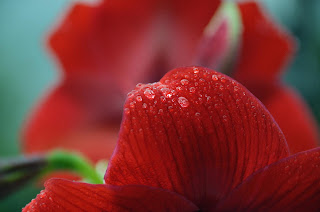Taoroko Gorge is part of the Central Cross-island Highway and belong to the Taroko National Park. It is the most scenic place in Taiwan. On impulse, I made a day trip from Taipei to the park two weeks ago when Grace was on a trip to Paris. The meaning of the Taroko is "magnificent and beautiful" in local tribal language. Central Cross-island Highway was built in between 1956 to 1960 by the veterans of Communist-National conflict of China . The 20 km of highway that goes through Taroko Gorage was the most difficult part of the whole construction project. The road had to be carved into the marble cliff. It was purely built by hands and dynamites with the lost of 212 life.
The above picture was taken at Swallow Grotto. The legend has when the road was built, there were a lot of swallow living on the cliff. Most of them probably scared away by the dynamite. From the picture you can see how tall is the gorge. The black hole in middle on the left is the road. Today most of the original roads are footpaths for the tourists, the major road is further inside in the mountain as tunnels of two-lane highway.
This is the Bridge of Kind Mother. It is located at the junction of two rivers. The legend has that a local tribesman was lost in the river during the road construction. The mother who brought lunch for him everyday came to the same spot each day hoping for his return. The little gazebo on top of rock, which is called Frog Rock, was built by Jiang-Kai Shek's son to remember his mother. There is another gazebo built by Jiang-Kai Shek to remember his mother at the other side of the bridge. This is not the original bridge, like most of the original bridges along the gorge, they have been often destroyed by flood water.
This is the most impressive part of the Taroko Gorge, Tunnel of Nine Turns. During my trip to the gorge two weeks ago, I found that this area is no longer open to the public. The entrance to the tunnel was littered with broken rocks. A few years ago, a Chinese tourist was killed by the fallen rock. I have to take out this photo from my previous travel to show you how impressive the gorge is. The rock below the road was pure white as original color of the marble. It has been washed by the flood water. I surly do not want to be at that road spot when Typhoon hits Taiwan and the flood water in the mountain explodes.
At the narrowest part of the "Tunnel of Nine Turns", when we look up, we can see the sky through a space formed by the cliffs at the two sides of the gorge. It is in a perfect shape of Taiwan. It illustrates how narrow the gorge is at this area.
This is Eternal Spring Shrine located near the end of the gorge where it joins the Pacific ocean. It was built in memory of the life lost during the construction of the highway. The shrine looks different from what I remember when I visited the area as a college student. Do not take lightly of the gentle spring water that coms out from the mountain. The shrine has been destroyed many times and rebuilt many times due to the flood water.
To see more entries of ABC Wednesday clcik here.










































